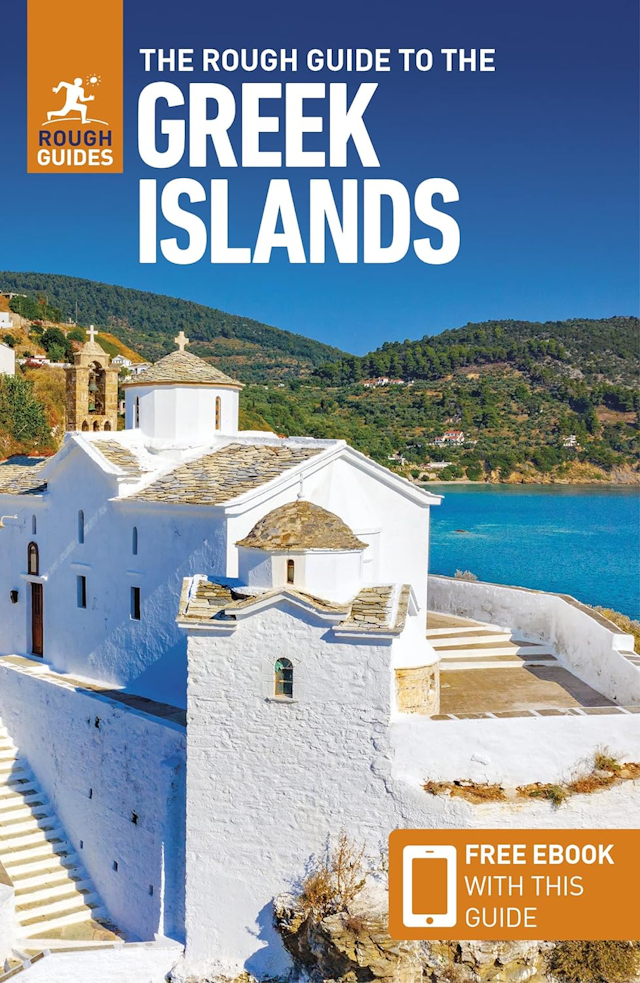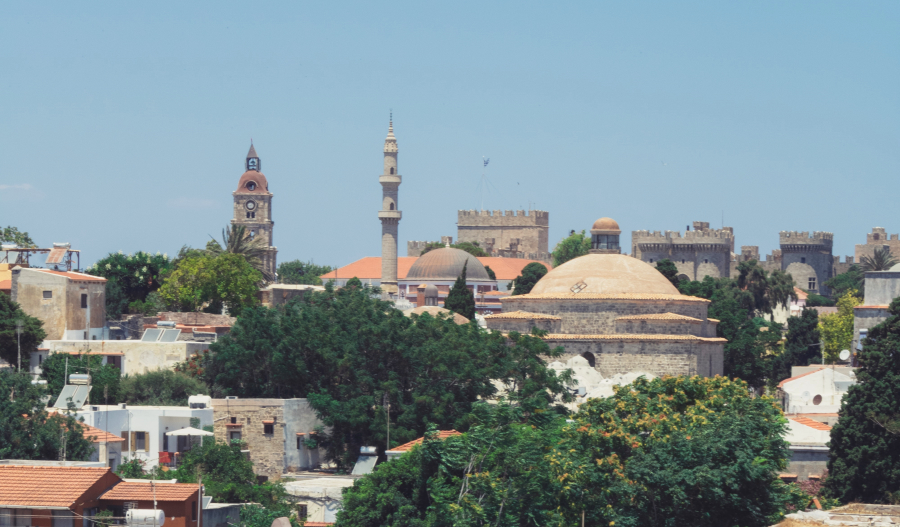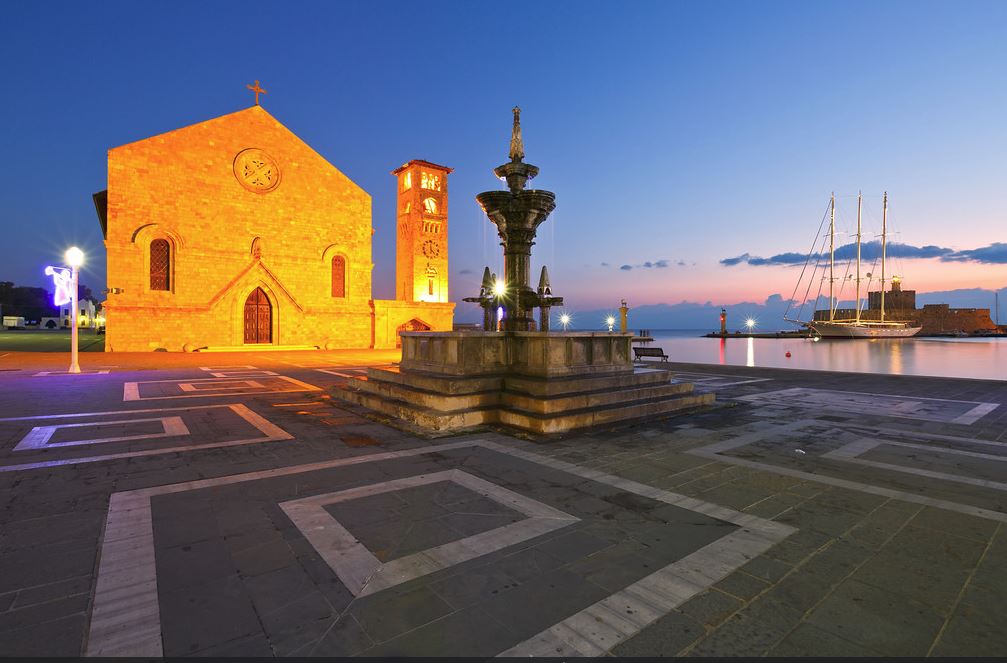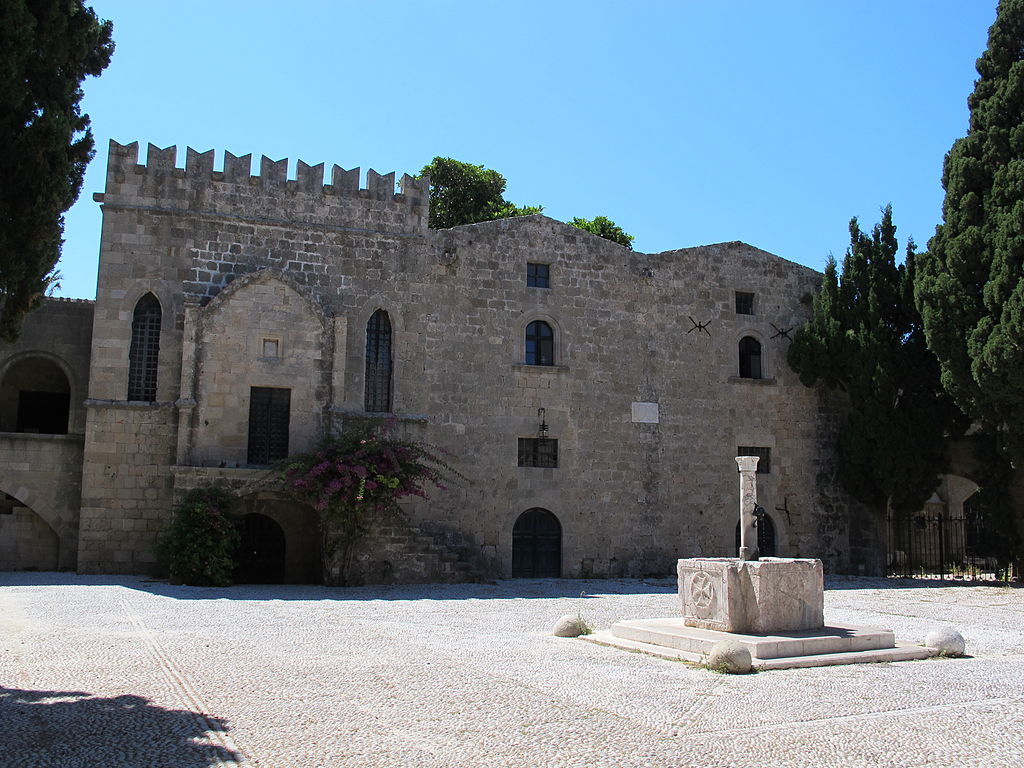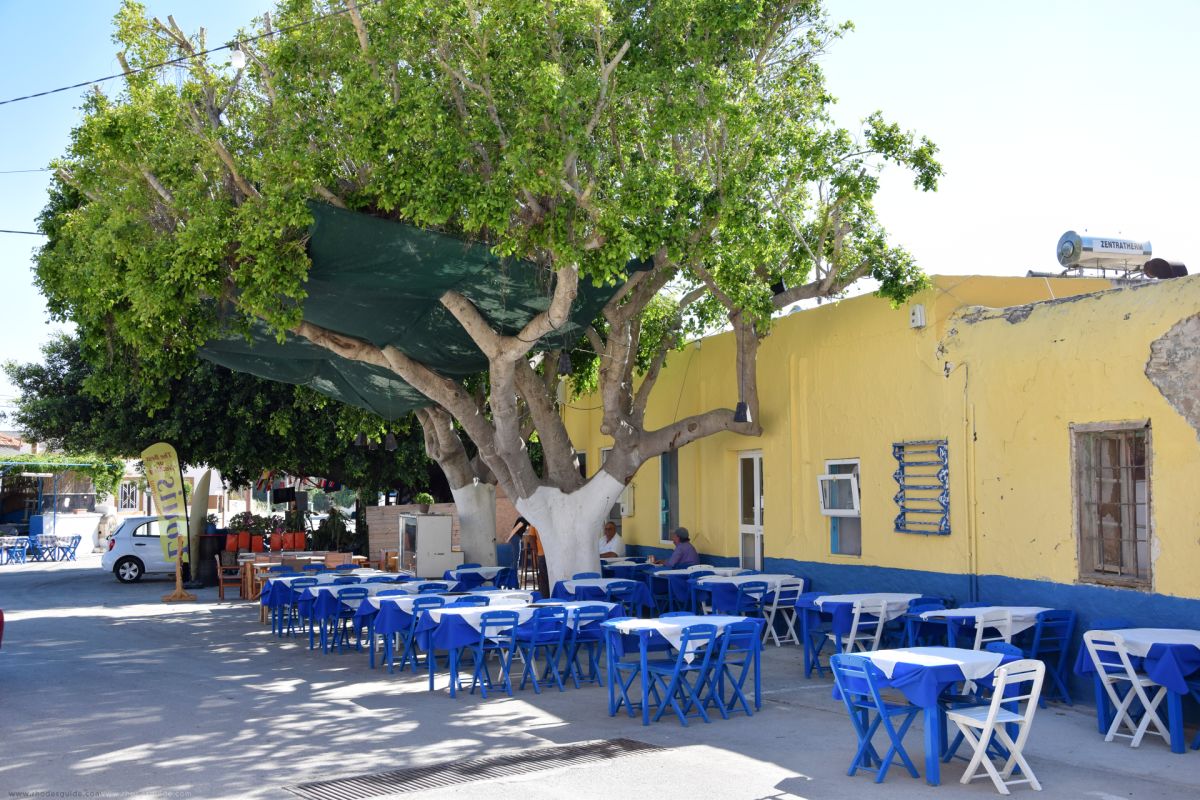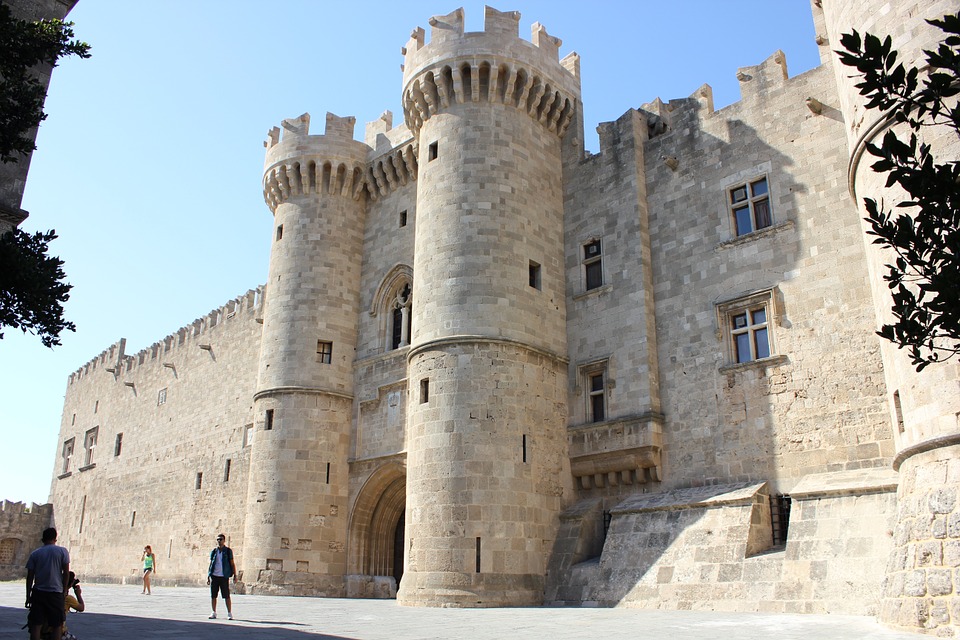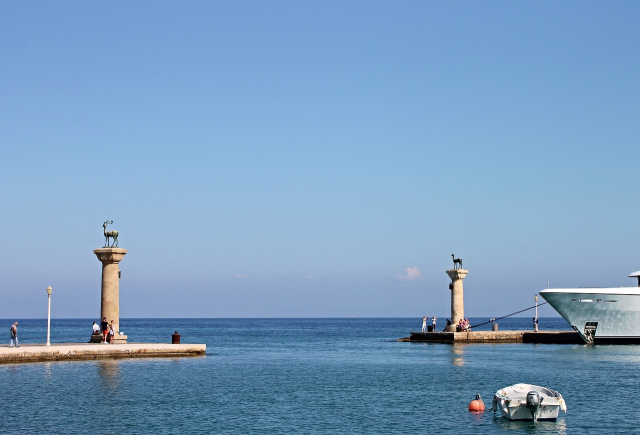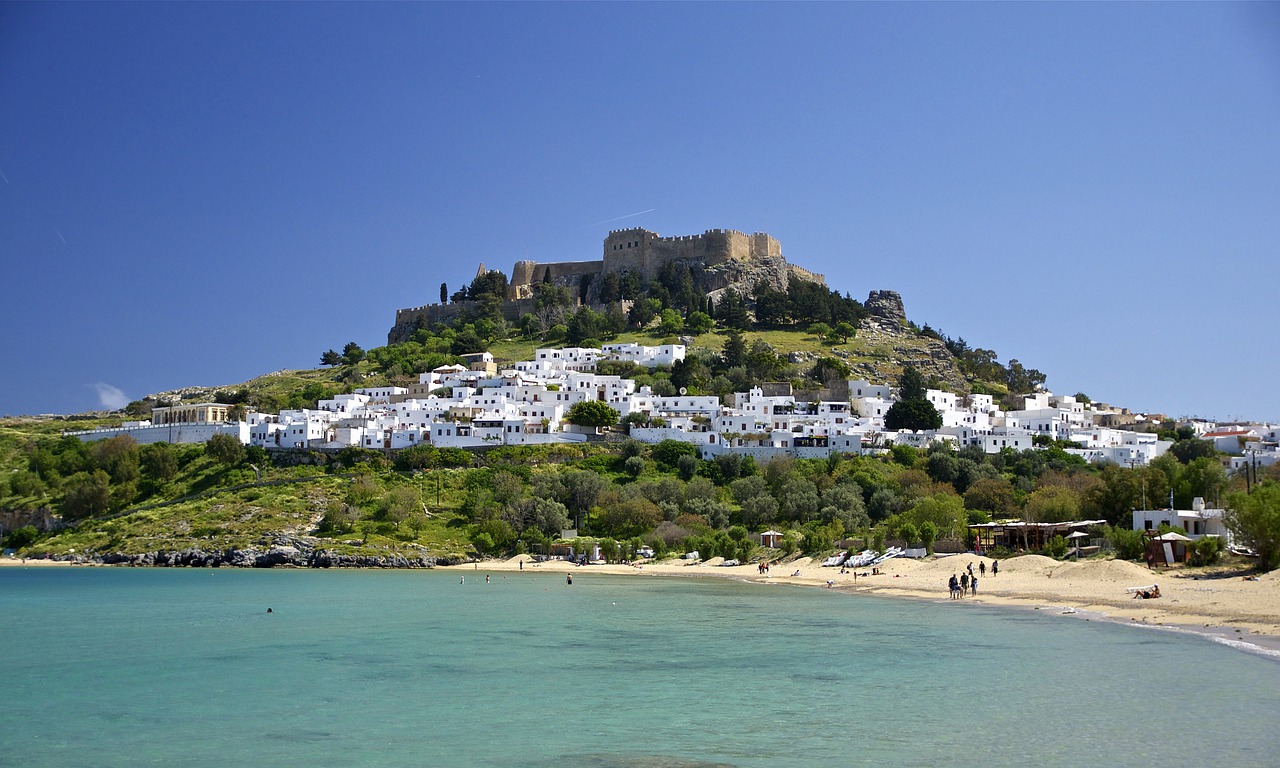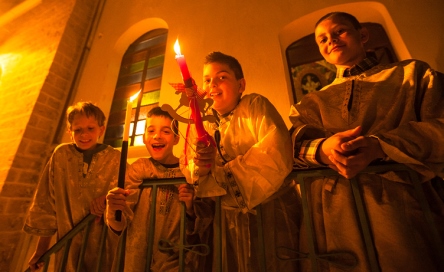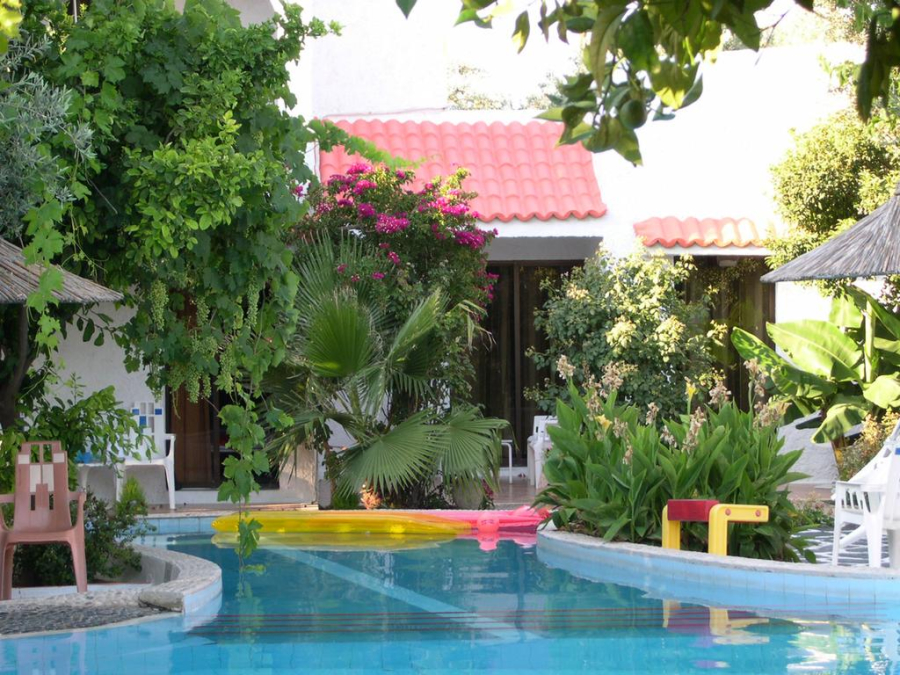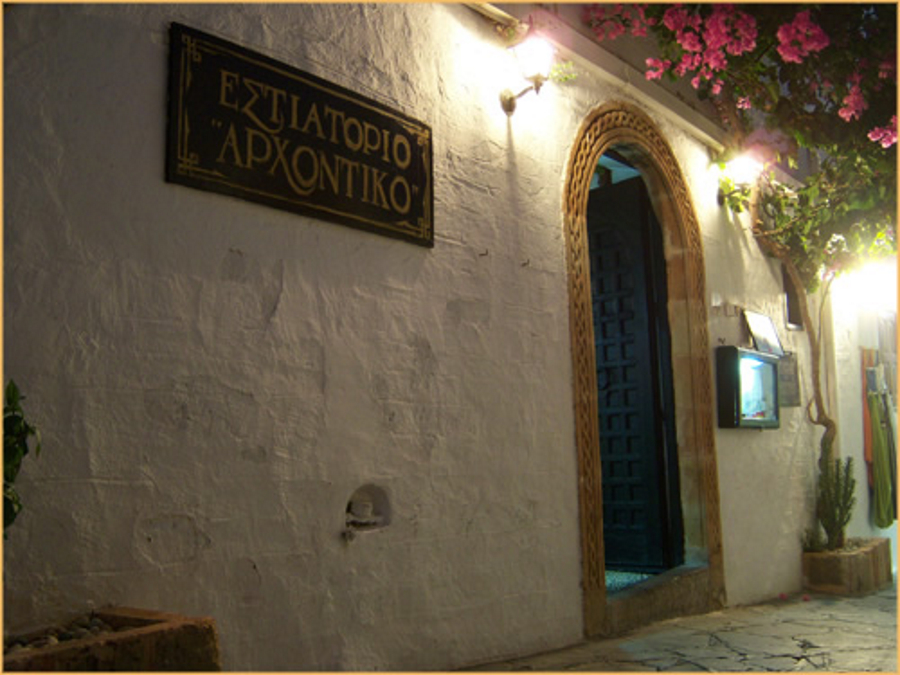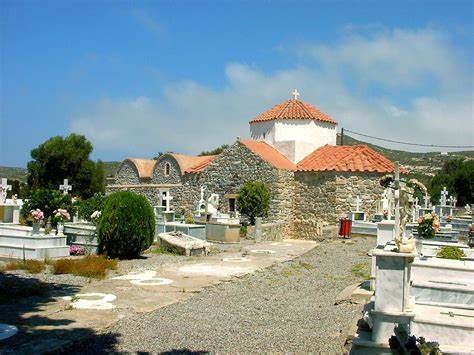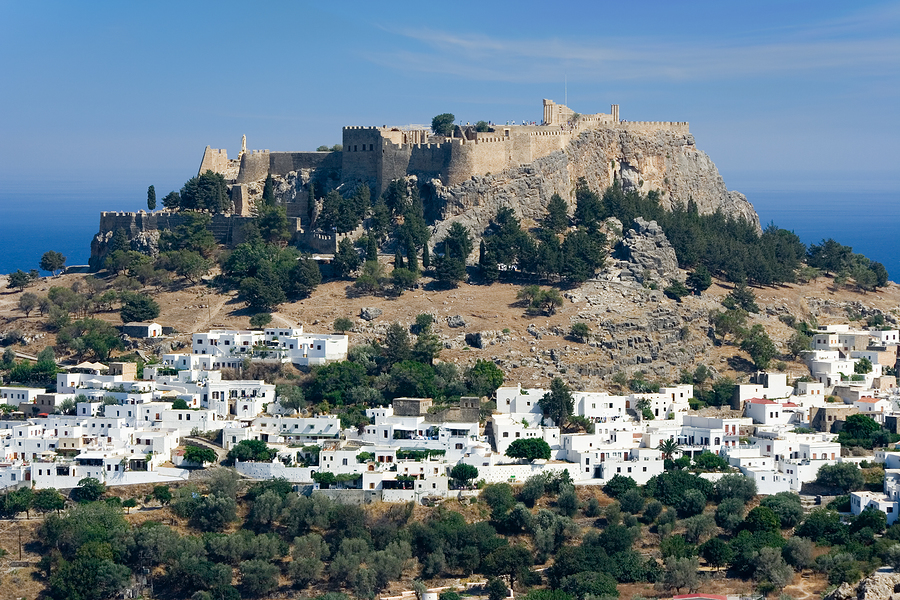- HOME
- Dodecanese
- Rhodes
- Best Time to Visit Rhodes
Best Time to Visit
Rhodes
Greece Travel Secrets picks the best time to visit Rhodes, with a monthly summary of the weather, plus hotel prices and special events to help plan a visit.
Rhodes, the largest of Greece's Dodecanese islands, is a jewel in the Mediterranean with year-round mild weather. Historical sites, stunning beaches, vibrant nightlife, and charming villages, it's no surprise that this island is a beloved destination for travellers worldwide.
But when is the absolute best time to visit Rhodes? Let's explore the island's climate month by month, including weather, special events, and hotel prices!
Best Time to Visit Rhodes Month-by-Month
Starting with January, Rhodes, like the rest of Greece, is in its winter season. The average temperature is around 56°F (13°C) with an average rainfall of 5.9 inches (150 millimeters). They don't usually experience snowfall.
Hotel prices generally are at their lowest, appealing to budget-conscious travelers. For history enthusiasts, a winter visit can be more comfortable exploring ancient sites like the Acropolis of Lindos without large crowds or intense heat.
In February, temperatures slightly increase to an average of 57°F (14°C). The rainfall is around 4.7 inches (120 millimeters). February is similar to January in terms of pricing and low tourist numbers, with the added benefit of experiencing the Apokries, an engaging pre-lent carnival with traditional music and dancing adding color to the island's streets.
March sees the arrival of spring, with temperatures hovering at an average of 60°F (16°C), and rainfall decreases to 3.5 inches (90 millimeters). The Independence Day celebrations on March 25th offer an impressive parade showcasing historical Greek costumes and military units. Hotel prices remain quite affordable.
April brings more warmth, having an average temperature of 66°F (19°C), and rainfall drops further to 1.6 inches (40 millimeters). Easter celebrations in Rhodes are quite a spectacle, with processions, traditional meals, and fireworks. Hotels start increasing their prices, anticipating the summer tourists. Read about the time we spent Easter on Rhodes.
Also read our page on Easter on Symi if you want to pop over to the neighbouring island for the celebrations.
In May, the temperature averages 73°F (23°C) with only 0.7 inches (18 millimeters) average rainfall, marking the start of the dry season. The Medieval Rose Festival during this month is worth attending, bringing back the medieval times with knight tournaments and street theatre. It’s a great time to be staying in the Old Town of Rhodes. Prices for hotels start to rise, though, due to the increase in visitor numbers.
June ushers in summer with an average temperature of 81°F (27°C) and average rainfall of 0.4 inches (10 millimeters). The Rhodes Marathon in mid-June attracts athletes and sports enthusiasts from all corners of the world, creating a unique atmosphere. Hotel prices further increase, marking the start of the high tourist season.
July is peak summer with daytime temperatures soaring to around 86°F (30°C). It's virtually rain-free, with an average rainfall of 0.2 inches (5 millimeters). There are various beachside festivities during this month, with hotel prices being the highest. It's recommended to book well in advance if you're planning your trip during this time.
August continues the heat trend with an average temperature of 86°F (30°C) and minimal rainfall at 0.2 inches (5 millimeters). In early August, locals celebrate Dekapentavgoustos, The Assumption of the Virgin Mary, with religious processions and feasts. Accommodation costs remain high due to popular demand.
September welcomes the onset of autumn. The temperature drops slightly to 81°F (27°C), and the rainfall starts increasing, reaching up to 0.6 inches (16 millimeters). In August/September the Rhodes International Theater Festival is a treat to experience with artistic performances from around the world. The hotel rates start declining after the summer rush.
In October, temperatures cool down to 74°F (23°C) on average, and rainfall increases to 2.7 inches (70 millimeters). The festival of Panormitis, dedicated to the island’s patron Saint Michael, takes place in late October on neighbouring Symi, a short ferry ride away. Hotel prices continue to reduce, proving to be an attractive time for budget travellers.
November sees a further drop in temperature to an average of 65°F (18°C), and the rainfall is at its peak with 5.3 inches (135 millimeters). This is a quieter month with fewer events, but the serene landscapes and reduced hotel prices can attract those who enjoy off-peak travel.
December marks the beginning of winter, the temperatures decreasing to an average of 59°F (15°C) and a rainfall of 4.5 inches (115 millimeters). The festive mood is unforgettable, with Christmas and New Year celebrations. Hotel prices remain at their low end, making it a considerable time to enjoy a Mediterranean winter.
Read our review of the Best Guidebook to Rhodes
Best Time to Visit Rhodes Summary
In conclusion, the best time to visit Rhodes in Greece ultimately depends on your personal preferences. If you long for the warm sunshine and lively beach scene, then the summer months are a perfect choice.
However, if you're looking to explore the rich history and culture at a more leisurely pace and lower budget, the shoulder seasons (spring and autumn), or even winter may be your best bet.
Latest Posts
-
Explore Vikos Gorge: Hiking, Rafting, and Food in Zagori
One of the most impressive canyons in Europe and one of Greece’s favorite mountain destinations, Vikos Gorge invites hikers and food lovers alike. -
Lefkada: The First Ancient Theater of the Ionian Islands Comes to Light
The first ancient theater ever discovered in the Ionian Islands is located in the heart of the ancient city of Lefkada, established before the end of the 7th century BC. -
5 Epic Island Hikes in Greece for Spring Explorers
This spring, five majestic peaks across Greece’s islands invite us to lace up our boots and discover a wilder side of island life. -
Greek Ferry Services to Halt on May 1 Due to Labor Strike
Ferries in Greece will remain docked for 24 hours on Thursday, May 1, as the Pan-Hellenic Seamen’s Federation (PNO) joins Labor Day mobilizations announced by the General Confederation of Greek Labor… -
Sifnos: Greece’s Hidden Culinary Star on the Rise
Sifnos, a Cycladic island, is gaining fame for its rich culinary heritage, especially the beloved melopita honey-cheese tart. -
Easter in the Mystical Castle of Monemvasia
In the castle town of Monemvasia, with its dramatic medieval backdrop and sea views, Easter is a deeply spiritual and atmospheric experience. -
Easter in Leonidio: A Tapestry of Light, Culture and Cliffs
In Leonidio, Easter comes alive with handmade hot air balloons in the sky and lanterns made from bitter oranges in the streets. -
The Lesser-Known Traditions of Greek Easter
Step off the beaten path this spring and discover the enchanting — and often surprising — Easter traditions found across Greece. -
April 9 Strike in Greece to Impact Public Transport, Ferries and Air Travel
Transportation and travel across Greece will face disruptions on Wednesday, April 9, as public transport, ferry and aviation workers join a nationwide strike called by Greek labor unions. -
Ancient Theater of Lefkada Brought Fully to Light Following Systematic Excavation
The Greek Culture Ministry has announced that the first ancient theater ever identified in the Ionian Islands has recently been brought fully to light on Lefkada, revealing an impressive monument that…


